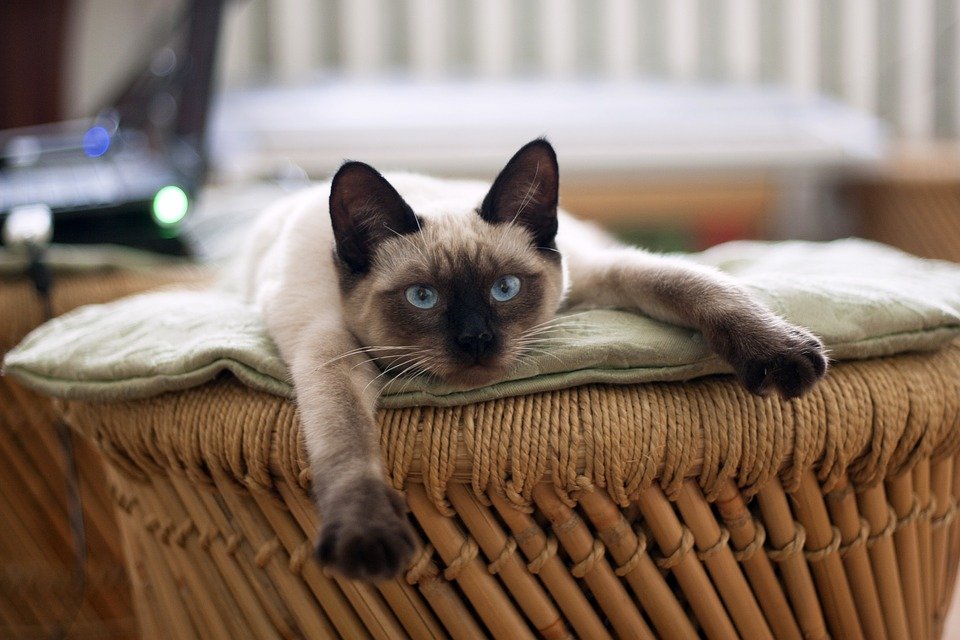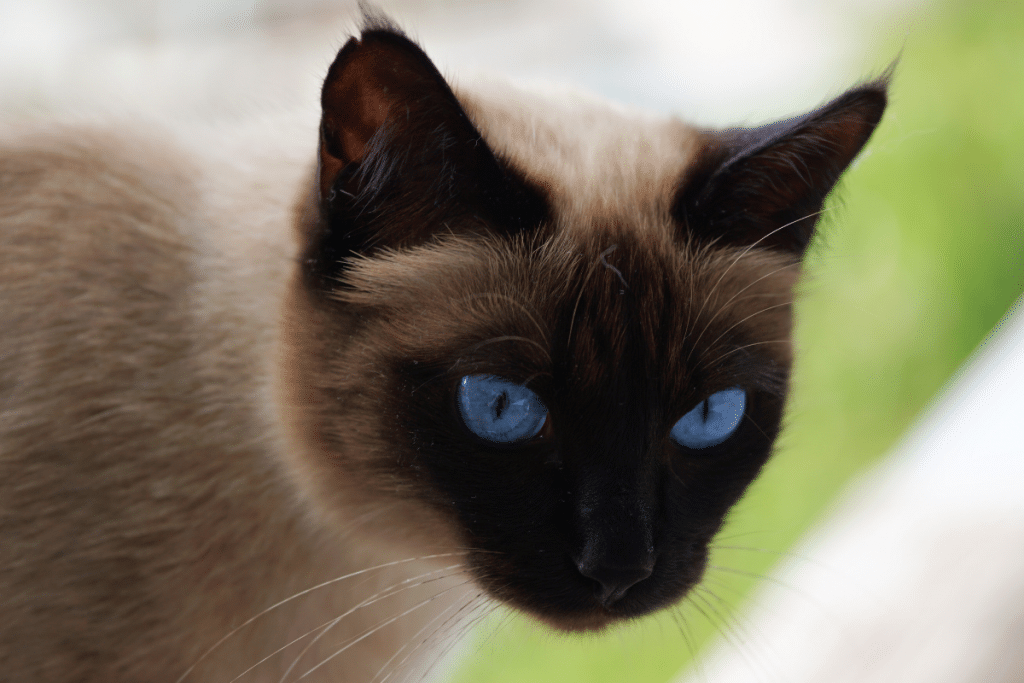The super-friendly and highly social Siamese cats make a great addition to your family. It is one of the very few intelligent breeds of cats that enjoy spending time around humans. In fact, your Siamese cat thrives on outdoor adventures and human interaction. And when the cat doesn’t want any outdoor activity, all it needs is to spend some time in its owner’s lap. But what if you are not at home most of the time? Or when you are at home but are unavailable to your pet? In that case, your Siamese cat may experience separation anxiety.
There are several causes of separation anxiety, ranging from stress and anxiety to routine issues, lack of stimulation, and missing daylight. But the best part is that you can manage separation anxiety in your Siamese cat. All you have to do is figure out the possible cause of separation anxiety and find ways to tackle it. And as we try to understand separation anxiety in Siamese cats better, we must start by knowing what separation anxiety is and the common signs of separation anxiety in Siamese cats.
What is Separation Anxiety in Siamese Cats?
Separation anxiety is a very common behavior recognized among dogs, but some cat breeds are also prone to separation anxiety. And the Siamese cats are one of them. Siamese cats may be considered independent creatures who can keep themselves busy all day. However, they are a very social cat breed. Moreover, they thrive on human interaction and prefer to establish a deep bond, especially with their owners. It is also possible for your Siamese cat to establish a deep bond with other animals as well.
While most pet parents enjoy this attachment and bond with their Siamese cat, little do they realize that the attachment can turn out to be excessive. And when your Siamese cat’s preferred person or animal is not around for some time, they can start showing signs and symptoms of separation anxiety.
Signs and Symptoms of Separation Anxiety
It’s not always easy to figure out separation anxiety in Siamese cats, but they may show a few signs and symptoms that will give you an idea that your Siamese cat may be experiencing separation anxiety. Some of the signs and symptoms may include
Urinating Outside the Litter Box
Perhaps the most common sign of separation anxiety that your Siamese cat may show is house-soiling. They usually target their owner’s belongings, such as their bed or other furniture. While excessive urination may indicate certain medical conditions, such as diabetes or urinary tract infections, separation anxiety may be one of the possible reasons.
Excessive Attachment
Though Siamese cats usually prefer to be around their owners and other family members, if your cat is extra clingy most of the time, it could be a possible indication of separation anxiety.
Social Withdrawal
While Siamese cats usually express joy when they meet their owners after work, if your Siamese cats seem to avoid you or hide instead of greeting you, it could be a possible indication of separation anxiety.
Excessive Grooming
When your Siamese cat is experiencing separation anxiety, it is common for them to indulge in behaviors such as excessive grooming or licking. As a result, they may damage their coat, especially around the lower back, abdomen, thighs, and forelegs. However, loss of fur can also be a possible indication of food or environmental allergies. Hence, it is important to talk to your vet about it.
Loss of Appetite
Another possible sign of separation anxiety that your cat may show is loss of appetite. Your cat may refuse to eat, especially when the owner tries to feed them.
Vomiting and Diarrhea
Some of the classic signs of stress in your Siamese cats are vomiting and diarrhea. However, they can also be an indicator of some physical illnesses.
Other Behavioral Issues
Apart from excessive clinginess, if your Siamese cat is demonstrating destructive behavior, such as scratching doors or knocking off windowsills, then there is a possibility that your Siamese cat may be suffering from separation anxiety.
As a pet parent, you must remember that some of the signs and symptoms of separation anxiety overlap with the signs of other health and behavior conditions. Hence, if you notice any of the above signs, it’s best to consult your vet before you determine that your Siamese cat is experiencing separation anxiety.
Causes of Separation Anxiety in Siamese Cats
Now that you already some of the signs and symptoms your Siamese cat shows when experiencing separation anxiety, here are some of the causes of separation anxiety in Siamese cats.
#1. Anxiety and Depression
Just like humans, your feline also tends to feel sad or depressed. Siamese cats are prone to depression because they are an intelligent breed that thrives on interaction with humans and other animals. When they miss out on human connection or interaction with other animals, they develop depression, which leads to separation anxiety.
How to Manage it?
Identifying depression in Siamese cats may be difficult, but once your vet rules out all possible medical conditions or illnesses, they may suggest spending more time with your pet. In cases where your attention to your pet doesn’t suffice, and your Siamese cat is still struggling with depression and anxiety, your vet may prescribe anti-anxiety medicines which may be of help to your cat.
#2. Stress-Related Hormones
Stress is not something that only humans experience. It affects all living creatures, including your feline. Stress-related hormones may be the culprit that triggers separation anxiety in your Siamese cat. When you notice that your Siamese cat is stressed out or is starting to get anxious as soon as you are ready to leave the house, stress-related hormones may cause separation anxiety.
Due to the excessive release of stress hormone in the cat’s body, you can find your Siamese cat with an upset stomach that results in vomiting and diarrhea. Moreover, excess stress levels can cause your Siamese cat to pee and poop around the house instead of their litter box.
How to Manage it?
If stress-related hormones are what’s causing separation anxiety in your Siamese cat, you will have to work on managing the source of stress. If your departure from the house is what triggers stress, try to perform different tasks in varying orders, so it makes it difficult for your cat to form a correlation between certain tasks that indicate your readiness for leaving the house.
Moreover, make your arrival back home less exciting as well. And while you are away, make sure your feline is surrounded by its favorite objects. You can also try using cat diffusers that may instantly calm down your Siamese cat.
#3. Early Separation from Family
Another possible cause of separation anxiety in your Siamese cat is early weaning and separation of the cat from its family. When Siamese kittens are separated from their mother and siblings at a very young age, they miss out on the emotional connection with their family, which eventually leads to separation anxiety syndrome.
How to Manage it?
While it is something that’s often beyond your control, when you get a Siamese cat, make sure it spends around eight weeks with its family before you adopt it.
Unfortunately, there is little that you can do for kittens who are orphaned except loving them and spending more time with them.
#4. Lack of Stimulation
Siamese cats are an intelligent breed that needs constant stimulation. An environment that lacks stimulation can lead to depression and anxiety in your feline, reflecting as separation anxiety.
How to Manage it?
To make the environment more welcoming and appealing to your Siamese cats, it is important to invest in toys that can keep your pet occupied while you are away. Moreover, it is also important that you keep the windows and curtains open so your cat can enjoy the outside world. However, make sure you take appropriate safety measures as you leave the windows open.
#5. Daylight Saving
It might come as a surprise, but daylight saving can also be a potential cause of separation anxiety in Siamese cats. Regardless of whether your cat spends more time indoor or outdoor, sunlight plays an important role in determining their schedule. Moreover, cats are naturally drawn towards sunlight, so when there is a change in time, it leads to stress and confusion for your Siamese cat, which eventually reflects as separation anxiety.
How to Manage it?
Separation anxiety that’s a result of daylight saving eventually settles down on its own as the cat’s internal clock adjusts to the new timing.
Final Words
From stress to early weaning, lack of stimulation, and daylight saving, there are several causes of separation anxiety in Siamese cats. Once you identify the symptoms and rule out other possible medical conditions causing these signs, you can manage your cat’s separation anxiety. All it takes is a little more effort on your part. In most cases, mild separation anxiety goes away without any treatment. However, in some cases, your Siamese cat may need medical intervention.



